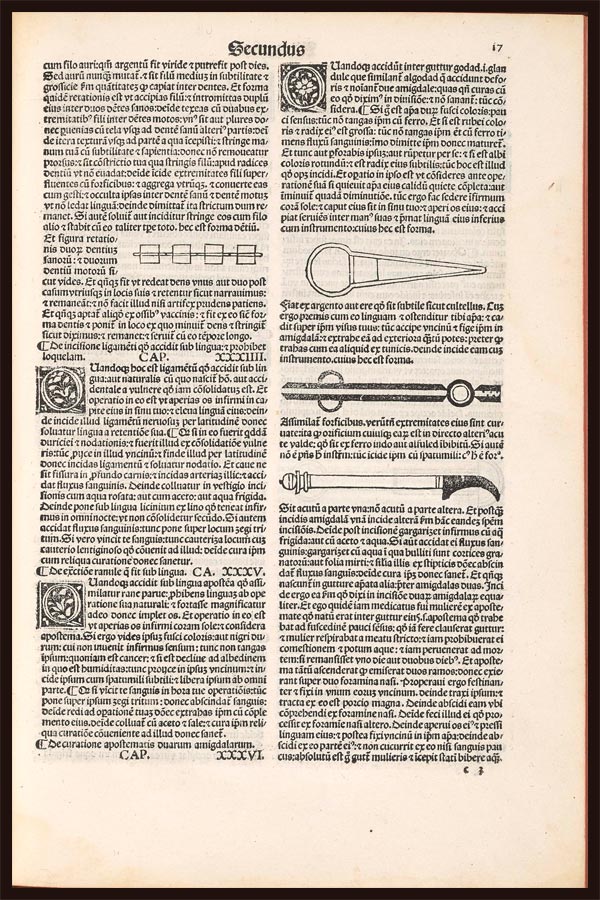As shown on this page, Albucasis explains how to fix two loose teeth between two healthy ones, suggesting that they should be wired to one of the sound teeth with a silver or gold wire; and on the second column of the same page, Albucasis describes the procedure for tonsillectomy (extraction of the tonsils) including a description of the relevant instruments:
Sit the patient facing the sun with his head in your lap; open his mouth and let an assistant hold the patient’s head between his hands and depress his tongue with the instrument drawn here. Let it be made of silver or bronze and as thin as a small knife blade. Then when you press the tongue down with it the swelling will be apparent and your gaze will fall upon it. Then take a hook and fix it in the tonsil and pull it as far forward as possible but avoid pulling any of its adjacent mucosa with it. Then cut it off with the instrument drawn below, which is similar to a forceps except that its ends are curved with each hollow exactly opposite its fellow, and extremely sharp. It is made of Indian iron.
Listen to the translation:


